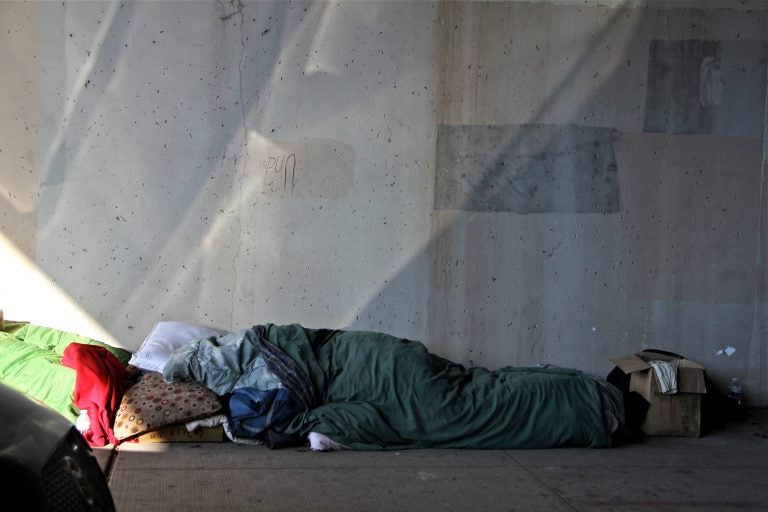With ‘housing first’ initiative, N.J. cuts homeless rate by half in 10 years
HUD statistics show Pennsylvania, Delaware and particularly New Jersey are making headway in getting the homeless into permanent housing.

A homeless person takes shelter under an overpass on North 5th Street in Philadelphia. (Emma Lee/WHYY)
New national data about homelessness hold encouraging news for the region, especially New Jersey.
The annual report, released by the U.S. Department of Housing and Urban Development, shows that homelessness in the Garden State dropped by 50.7 percent over the last decade.
No other state had a bigger decline in homelessness during that span, according to the research.
Anti-homelessness activists in New Jersey say the decrease isn’t tied to just one factor, but many — including the increasing popularity of a “housing first” model.
First adopted in New York in the late 1990s, the controversial strategy makes permanent, affordable housing the priority for getting homeless people back on their feet. It’s now a cornerstone of HUD’s process for awarding grants to local communities.
“We’re not going to screen out folks who haven’t been able to deal with either their substance abuse issues or their mental health issues prior to entering housing,” said Jay Everett with Monarch Housing Associates, which works to end homelessness in New Jersey.
“You have a better shot at solving some of the barriers that have kept you out of housing when you’re already housed,” he said.
Renee Koubiadis, executive director of the Anti-Poverty Network of New Jersey, said decreasing homelessness by 50 percent is significant. But she worries that a change for the worse may be on the horizon.
“We have a dearth of over 212,00 affordable homes in our state. And we have very low wages that haven’t increased over the last decade,” she said.
The homeless populations in Pennsylvania and Delaware also declined over the last 10 years, dropping by 12.8 percent and 6.3 percent respectively.
WHYY is your source for fact-based, in-depth journalism and information. As a nonprofit organization, we rely on financial support from readers like you. Please give today.





